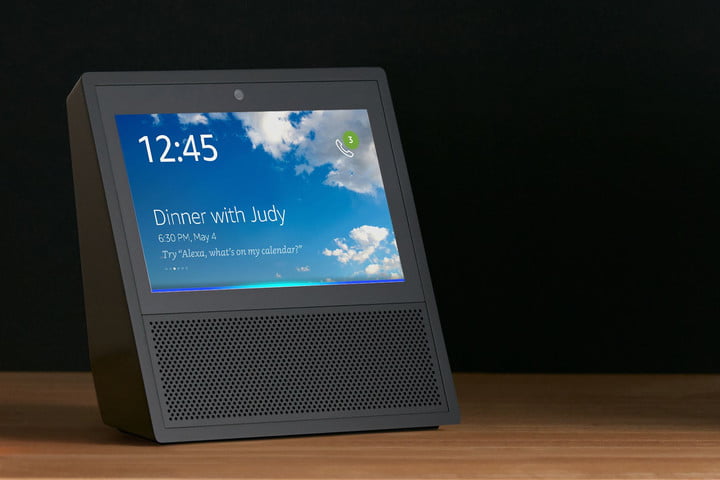Around the time I was finishing the Game Boy Zero project, I saw the commercial launch of a new Home product from Amazon called the Amazon Echo Show.

Echo Show, by Amazon
It provides a tactile and voice interface to search and consume information from various sources as well as provide a direct lowfriction way of purchasing from the Amazon store.
Having a device, legally still owned by the company that sold it to you, listening 24/7 to whatever you are saying sounds pretty scary. Yet, the premise of having a beautiful looking device that acts as a smart speaker and shows relevant information was enough inspiration to decide upon what my next project was going to be.
Today, the Game Boy Zero has landed in a closet in the garage and is not being used at all. It was a nice project, but lacked real usability. To aleviate this, I started thinking about the value proposal of the project.
The Value Proposal
In order to have a good idea of what I want to build, I need to have an idea of which issues I am trying to solve. Here’s a selection:
- I always forget looking up where the traffic jams are in the morning.
- We generate so many photos of our kids, yet the images on our dresser stay the same.
- Early meetings happen, I always check my calendar to see if I have to leave extra early to work.
- My computer only has a headset, so playing music in the living room is cumbersome.
Summed up: to have an information hub, digital picture frame and wireless audio player, that:
- Is visually attractive.
- Provides relevant information at the right time.
- Plays music via bluetooth, web radios and podcasts.
- Shows my photographs when no information is needed.
Internal Architecture
The internals were easily decided upon. A touch screen hooked up to a Raspberry Pi 3 microcomputer would give me a solid foundation to further build upon. Adding a JustBoom amp hat to the microcomputer allows me to hook up high quality speakers.
Since the power requirements for the Raspberry Pi (5V, 2.5A) and the JustBoom (12V @ 3.75A) differ, I chose to a 60W @ 12V power supply to directly feed the JustBoom amp hat and create an extra 5V line using an adjustable step down DC-DC buck converter.





